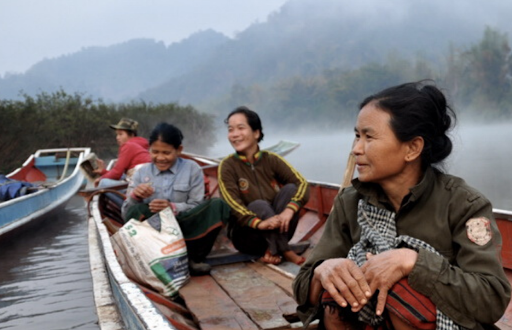Women from India, Nepal, and Bangladesh are growing stronger in their leadership to advocate for the rights-of-rivers advocacy. From the Himalayan glaciers in Nepal to the floodplains of India and Bangladesh, South Asia’s rivers support 23% of humanity, boast lush biodiversity, combat climate change, and are the renowned cradles of culture and traditional knowledge.
The transboundary rivers of Nepal, India, and Bangladesh, a region rich in biodiversity and disproportionately affected by climate change, are under threat. They are over-extracted, significantly degraded in terms of pollutants, and increasingly dammed for hydropower generation or for large-scale irrigation. Yet their flows underpin significant cultural practices and support livelihoods through their value to natural ecosystem services and downstream agriculture.
In the region, women are often the stewards of rivers within their communities but lack resources and access to important resources and tools to protect rivers. Moreover, the shrinking of space for dissent in the region has made traditional forms of advocacy challenging. Community-level transboundary river protection is fundamental to addressing the urgent freshwater crisis in a region rich in biodiversity and disproportionately affected by climate change.
International Rivers seeks to support women river protectors from transboundary rivers by providing training in an innovative approach to river protection: rights of rivers. This approach seeks to bestow on rivers legal standing and entitlement to basic rights, including the right to flow, to be free of pollution, and to perform essential functions within its ecosystem.
Although its modern form dates to the early 1970s, the concept that an object of nature has inherent rights that humans must respect derives from Indigenous worldviews that are millennia-old. As a result, a Rights of River approach to river protection that puts community guardians front and center aligns more closely with traditional and community knowledge and culture. By taking the route of courts and legislation rather than more common civil society approaches to activism, a Rights of River approach has the potential to be a game changer.



